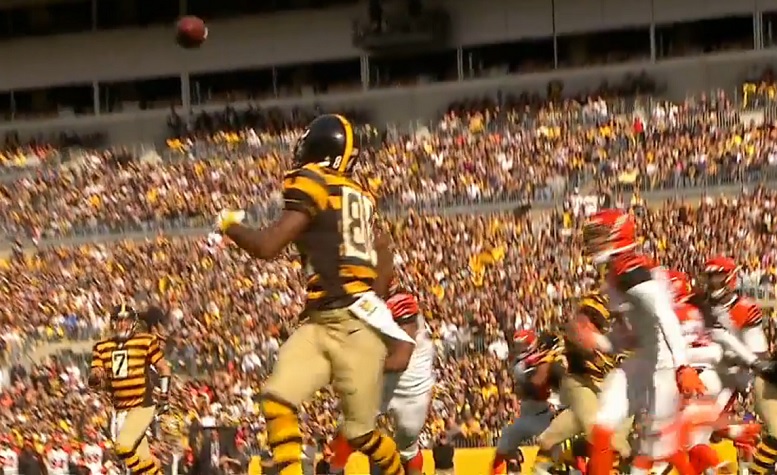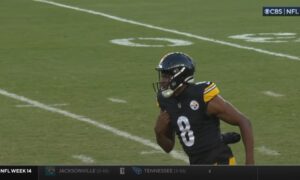Earlier I wrote an article breaking down the overall red zone efficiency the Pittsburgh Steelers achieved last year, but now it’s time to dig a little deeper and see what this team has at the receiver position within the 20 yard line. This breakdown includes targets, receptions, catch percentage, and touchdowns as the basis for the receiving stats, which come from pro-football-reference.com. Note: only players returning this year, and with more than a couple targets, are shown. Let’s dive in.
Red Zone Receiving
Antonio Brown: 23 targets/16 rec. 69.6% 8 TD’s
Markus Wheaton: 15 targets/7 rec. 47% 3TD’s
Ladarius Green: 8 targets/5 rec. 62.5% 3 TD’s
DeAngelo Williams: 5 targets/2 rec. 40% 0 TD’s
Le’Veon Bell: 4 targets/3 rec. 75% 0 TD’s
These are the numbers one would expect when it comes Brown’s red zone targets. He is an elite receiver who’s route running ability is proven essential within the 20 yard line. In fact, he was the 2nd most targeted player in the red zone, behind only Eric Decker of the Jets. And of those targeted more than 10 times, AB ranked 10th in the league for catch percentage and 3rd in touchdowns among that group. There doesn’t appear to be a need for much improvement in Brown’s case, as he has proved to be very reliable in red zone situations. 30% of the team’s red zone targets went to Antonio, and there’s nothing to suggest it won’t be more of the same next year.
I’m very interested to see how Ladarius Green works his way into this offense, especially in the red zone. A big body like him, along with his impressive hands and speed, makes for a great red zone candidate. He didn’t get too many opportunities last year in San Diego, since Antonio Gates saw many of the targets.
But when Green was given a chance near the end zone, he largely delivered. Scoring 3 touchdowns on just 8 targets is encouraging. And he may be able to carve out a little chunk in the offense for himself based on his position. Last year, between Heath Miller, Jesse James, and Matt Spaeth, the Steelers targeted a tight end 15 times in the red zone. That works out to being just under 20% of the red zone targets.
These numbers suggest a decent amount of attention being paid to tight ends here. And I believe with Green’s ability, he should see the vast majority, if not all, of the position’s targets.
Another thing that stands out is the lack of targets to the running back in the red zone. Granted, they receive a good amount of carries, but perhaps that’s an article for another day. The Steelers tend to choose these plays with a running back blocking, but Bell and Williams saw some action in the receiving game here. It’s unlikely, though, that they will see a significant increase in targets since they saw just 9 of Roethlisberger’s 65 red zone throws come their way.
So doesn’t seem that they will look to drastically change their play-calling in the red zone. They’ve improved their touchdown percentage every year since Todd Haley arrived, though there is certainly room for improvement, and they still have the best receiver in football along with a new 6’6” tight end in Green, who has shown some great red zone potential.
They’re on the verge of being a great red zone team, but unfortunately injuries have seemed to inhibit that growth. So, once again, here’s to a healthy team in 2016. And if that happens, I think we should expect to see even more improvement in the Steelers red zone efficiency next year.








